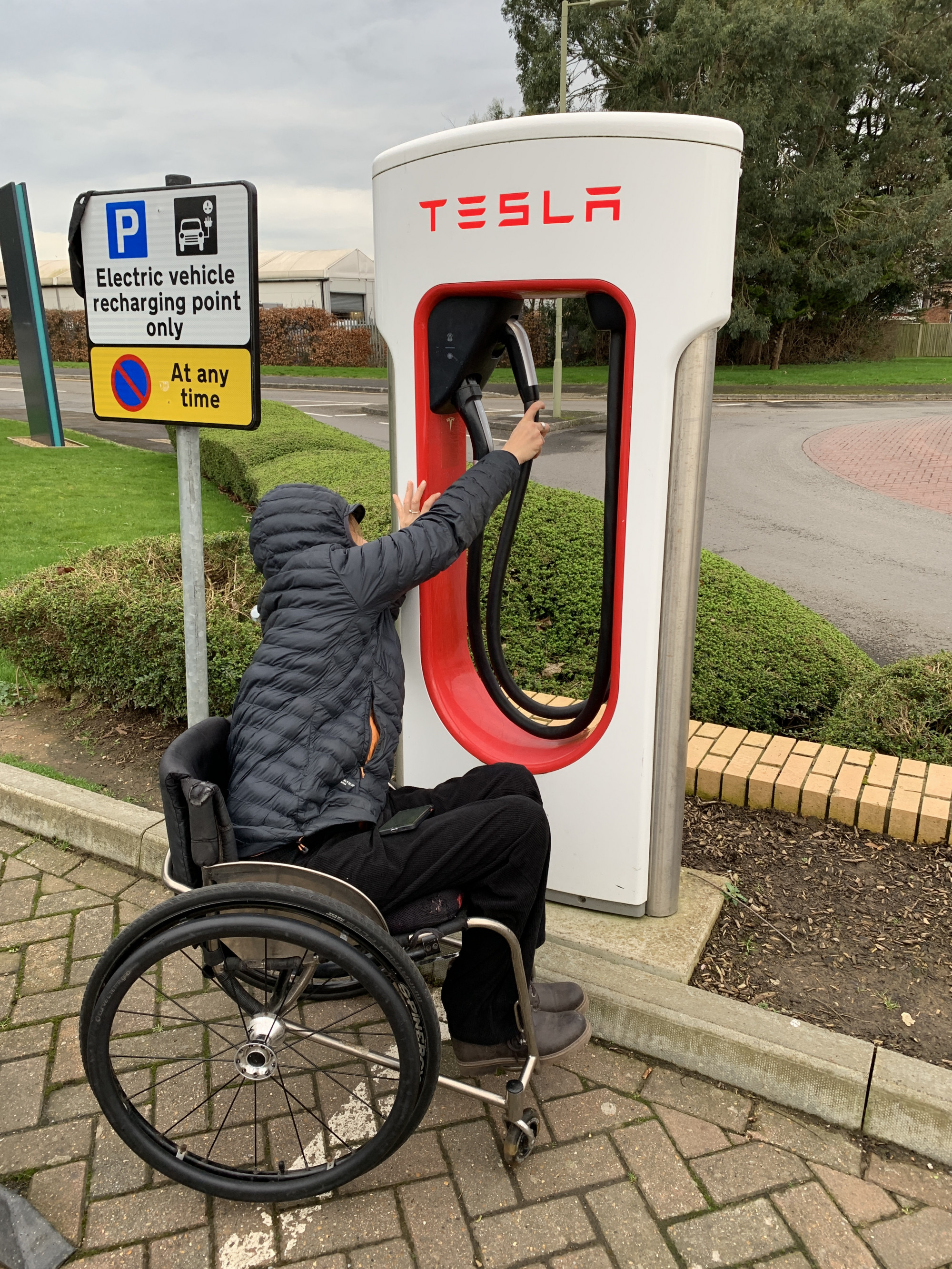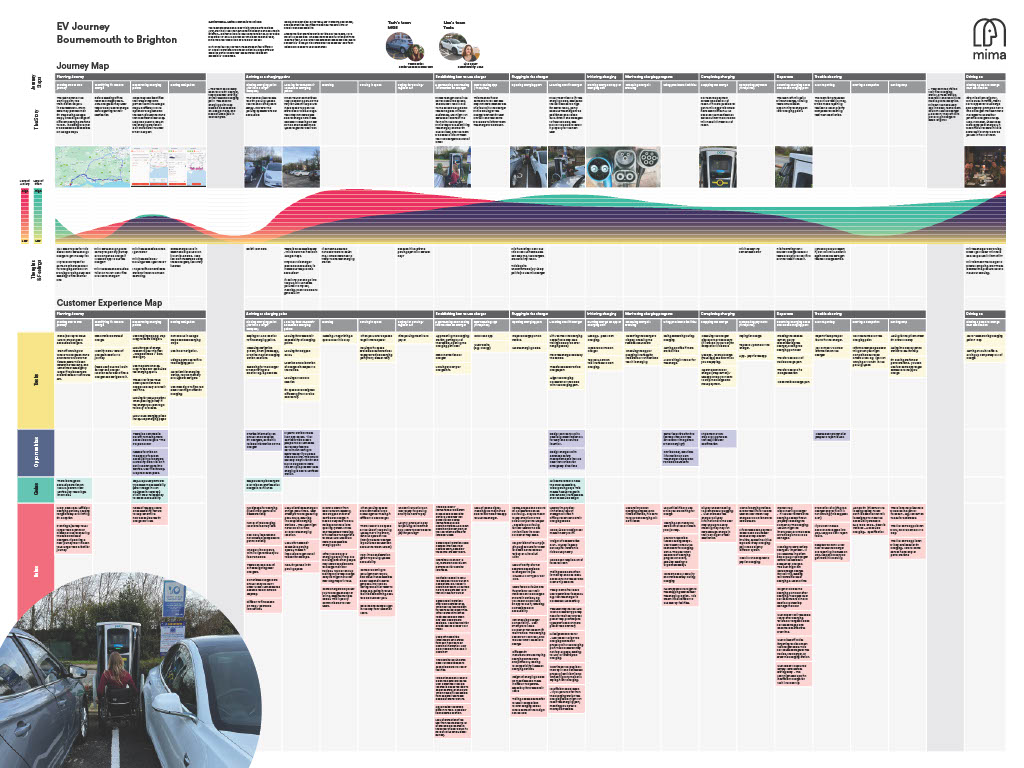Can environmental sustainability in urban spaces be achieved without compromising accessibility?
Urban spaces are evolving rapidly, with environmental sustainability goals playing an increasingly central role in their development. This has significantly changed how cities are accessed and used. As towns and cities around the world work to meet more ambitious environmental targets, an important question emerges: how can we ensure that these spaces are both sustainable and accessible for disabled people? This blog explores the intersection of sustainability and accessibility in urban environments, highlighting some of the challenges and opportunities.
15% of the global population are disabled and are disproportionately at risk from the impacts of climate change, they are also often excluded from policies that impact them. Well-intended actions in the name of sustainability have often failed to take into account wider considerations around accessibility and inclusivity. This is often referred to as ‘eco-ableism’. To avoid this, it's essential that councils, organisations, and designers incorporate the needs of disabled individuals from the beginning of their planning processes and apply inclusive design principles. In this context, accessibility means removing barriers for disabled people, while inclusive design aims to create environments that cater to the broadest possible range of people. By removing access barriers, we ultimately benefit everyone in society. For urban spaces to be truly sustainable, they must also be inclusive of all their inhabitants.

Sustainability goals in urban planning
Sustainability in urban planning is often framed by the United Nations' Sustainable Development Goals (SDGs), which emphasise responsible resource use, reducing carbon emissions, and promoting social equity. Key objectives include enhancing green spaces, supporting sustainable transportation, and encouraging energy-efficient infrastructure. These goals are crucial for mitigating climate change and building resilient communities.
Balancing challenges:
Material choices - sustainable materials often prioritise low environmental impact, but they may not always be the most durable or suitable for accessibility needs. For example, porous surfaces used in eco-friendly pavements can be difficult for wheelchair users.
Space allocation - creating car-free spaces and pedestrian-only areas can potentially exclude disabled people if access has not been considered at an early stage in the planning process. For example, a pedestrian-only space will impact people who rely on cars or cycles as a mobility aid.
Cycle infrastructure - existing cycle infrastructure such as narrow cycle lanes, physical barriers, and inaccessible cycle racks can be a barrier for those using adapted cycles. Cycle infrastructure should be designed to be inclusive.
Electric vehicle (EV) infrastructure - Mima’s recent study and journey map highlighted the barriers many disabled people face with accessing existing EV charging points. As new EV infrastructure is being rapidly rolled out it is essential that this is designed to meet the accessibility standards PAS 1899: 2022 – Electric vehicles – Accessible charging – Specification.

Access to public transport infrastructure
A study by the Research Institute for Disabled Consumers found that 57% of disabled and older people feel excluded from being able to reduce their environmental impact through using greener transport modes (RiDC, 2021). More accessible public transport modes such as rail and bus can make sustainable forms of transport available to a wider demographic.
A truly sustainable transport system must also be accessible to everyone, removing barriers to access benefits more than just disabled people. For example, as a wheelchair user, I rely on step-free access, but this feature is equally important for older adults, parents with young children and prams/strollers, and travellers with heavy luggage. An inclusive transport network enhances the experience for all of us, making it easier for everyone to get around.
Research suggests that improving accessibility in public transportation can lead to increased use of sustainable transport options among both disabled and non-disabled populations Clayton et al. (2017). This underscores the potential for accessibility improvements to contribute significantly to environmental sustainability goals.
When considering access requirements it is essential to consider the diversity of different user experiences. Accessibility needs vary widely, and it's crucial to consider a wide range of different user requirements. One way of achieving this is by establishing a lived experience engagement panel at the start of a project.
Equality Impact Assessments (EQIAs) are an important step of the process when considering any changes to the built environment or transport infrastructure. EQIAs assess the potential effects these changes may have on end users, both positive and negative, and help identify mitigation required to remove barriers. Mima has provided training for a number of UK train operators to help staff feel more confident carrying out EQIAs, and engaging with lived experience panels.
The need for interdisciplinary collaboration
Addressing these complex challenges requires expertise from various fields, including urban planners, environmental scientists, access consultants, disability rights advocates, engineers, service designers and policymakers. By combining diverse perspectives, we can develop innovative solutions, with collaboration being essential to finding the right balance between accessibility and sustainability.
For instance, when designing sustainable transportation systems, engineers and environmental experts might focus on reducing emissions and energy consumption. However, without input from access consultants and individuals with lived experiences of disability, these systems might inadvertently create barriers for some users. By bringing together diverse perspectives, towns and cities can develop solutions that are both environmentally friendly and inclusive.
Case study
COP28, held in Dubai in 2023, showcased how accessibility and sustainability can be effectively integrated in large-scale events. The organisers took a proactive approach to embed accessibility across all areas of event planning, engaging Mima as accessibility consultants six months ahead of the event, Mima worked closely with the sustainability team to ensure initiatives were both sustainable and inclusive for disabled people.
Our work included included:
Creating an accessibility framework and practical guidance for all teams.
Engaging with people who have lived experiences of disability to inform event planning.
Conducting physical and digital accessibility audits of the COP28 site and transport infrastructure.
Providing disability awareness training for staff and volunteers.
Offering on-site support to address accessibility issues during the event.
Our work helped to ensure that facilities, services, and the overall experience were accessible to guests, staff, and volunteers alike. By prioritising both accessibility and sustainability from the planning stages through to execution, COP28 set a new standard for future COP events.
See Mima’s case study on COP28.
Human-centred design and technology's role
Human-centred design principles advocate for environments that are inherently accessible to all people, regardless of age, disability, or other factors. Incorporating these principles into sustainable urban planning ensures that cities are both green and inclusive. Moreover, smart city technologies offer promising solutions, such as accessible public transportation apps and real-time navigation aids, which can help bridge the gap between sustainability and accessibility.
However, it's vital to recognise that initial solutions may not be perfect. Creating accessible and sustainable urban spaces is an ongoing process that requires constant feedback from users, evaluation, and improvement. This iterative approach allows cities to refine their strategies based on real-world experiences and emerging technologies.
Stakeholder involvement and long-term perspective
Engaging a diverse range of stakeholders, including disabled people, when planning changes to urban spaces is crucial. User insights can help identify barriers and practical solutions that benefit all city residents. For instance, designing inclusive active travel infrastructure, like accessible cycling routes and accessible, well-maintained pavements.
A long-term perspective recognises that good accessibility and inclusive design contributes to social sustainability, fostering communities where everyone can thrive. This approach requires adaptable and flexible urban spaces that can evolve with changing needs and technologies.
In summary, the path to truly accessible and sustainable urban spaces requires a deliberate and inclusive approach. By integrating comprehensive accessibility features into public transportation, making EV infrastructure more accessible, conducting thorough impact assessments, and actively involving disabled people in planning, cities can create environments where everyone can thrive. This inclusive approach not only enhances the quality of life for all residents but also aligns with broader sustainability goals, ensuring a just and equitable urban future.
Note:
Mima specialises in supporting organisations in inclusive and sustainable end-to-end design of services, products and built environments. Mima is a certified B Corporation™ with a team of accessibility experts, who all bring lived experience of disability to our creative problem solving.
References:
Research Institute for Disabled Consumers (RIDC). (2020). Disabled and older people and sustainable transport. Accessed at: https://www.ridc.org.uk/news/lack-accessibility-prevents-disabled-people-reducing-impact-environment
Clayton, W., Parkin, J., & Billington, C. (2017). Cycling and disability: A call for further research. Journal of Transport & Health, 6, 452-462. Accessed at: https://doi.org/10.1016/j.jth.2017.01.013
PAS 1899: 2022 – Electric vehicles – Accessible charging – Specification. Accessed at: https://www.bsigroup.com/globalassets/documents/about-bsi/nsb/cpin/s20282_bsi_ev-charge-points-002.pdf
Written by:

Lisa Baker
Head of Experience Design & Sustainability
Lisa is a Chartered Human Factors Specialist with 18 years of experience across various industries, including healthcare, transport, culture and heritage. Lisa specialises in bridging human factors and service design to create innovative and sustainable customer services and experiences, grounded in evidence.

Natasha Davies
Principal Accessibility and Inclusive Design Consultant
Natasha is an NRAC accredited Access Consultant. She has worked on a broad range of accessibility projects for organisations based in the UK and internationally, helping clients to implement inclusive design solutions. Her previous project experience includes working with historic buildings, art galleries, office spaces, sports centres and mixed-use development schemes.